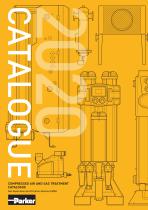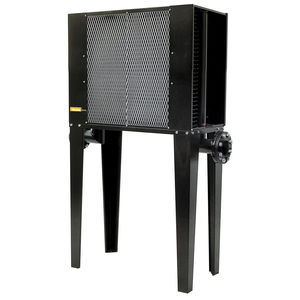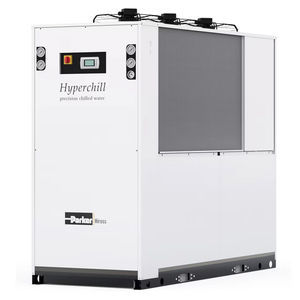
- Industrial machines and equipment
- Heat Exchanger and Refrigeration
- Water aftercooler
- Parker Gas Separation and Filtration Division EMEA
Water aftercooler Hypercool industrialwater-cooled
Add to favorites
Compare this product
Characteristics
- Material
- water
- Applications
- industrial
- Other characteristics
- water-cooled
- Maximum temperature
200 °C
(392 °F)- Flow rate
Min.: 318 ft³/min
(9.005 m³/min)Max.: 19,423 ft³/min
(549.998 m³/min)- Pressure
Min.: 10 bar
(145.038 psi)Max.: 16 bar
(232.06 psi)
Description
Highly efficient water cooled aftercoolers for the removal of water vapour and cooling of compressed air and gases downstream from compressors and blowers.
Compressed air and gases contain high levels of liquid water vapour. Effective water removal leads to reduced maintenance costs, enhanced system operation and improved product quality. Hypercool water cooled aftercoolers represent the vital first step in this process, installed immediately downstream of compressors or blowers they eliminate over 80% of the water present within compressed air and gas systems.
Controlled compressed air or gas temperature is essential for many industrial applications for efficient operation. The air or gas temperature can be very high at the compressor outlet. Hypercool water cooled aftercoolers can control this. They have been specifically designed to achieve maximum cooling at minimum cost, within a package designed to withstand the rigors of modern industry.
The ribbed tubing design offers high heat exchange efficiency with minimal pressure drops. Hypercool's extensive range of models includes those with fixed and removable aftercoolers, high pressure configurations and versions with special materials for any gas and water quality requirement.
A high quality aftercooler properly sized is an excellent investment that can help ensure that the compressed air or gas system works properly thereby guaranteeing the quality of the finished product.
Catalogs
Catalogue 2020
160 Pages
Other Parker Gas Separation and Filtration Division EMEA products
Compressed Air and Gas Aftercoolers
*Prices are pre-tax. They exclude delivery charges and customs duties and do not include additional charges for installation or activation options. Prices are indicative only and may vary by country, with changes to the cost of raw materials and exchange rates.





